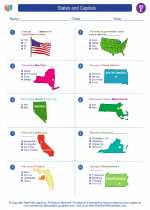States and Capitals -> vegetation
Vegetation
Vegetation refers to the plant life that covers a particular area, ranging from the grasses and shrubs to the trees and other larger plants. It is an essential component of ecosystems and plays a crucial role in the environment, including providing habitats for animals, preventing soil erosion, and contributing to the overall balance of the ecosystem. The type of vegetation present in an area is determined by factors such as climate, soil, and topography.
Types of Vegetation
There are several types of vegetation that can be found in different regions:
- Forests: Dense and extensive areas covered with trees, which can be further categorized into tropical, temperate, and boreal forests.
- Grasslands: Areas dominated by grasses and other non-woody plants, with different types such as savannas, prairies, and steppes.
- Deserts: Regions with sparse and specialized plant life adapted to arid conditions, including succulents and drought-resistant shrubs.
- Tundra: Cold and treeless landscapes with low-lying plants such as mosses, lichens, and small shrubs.
- Wetlands: Areas with waterlogged soil supporting unique vegetation like cattails, reeds, and water lilies.
Importance of Vegetation
Vegetation plays a crucial role in maintaining the balance of the environment and supporting various life forms. Some of its key importance includes:
- Providing habitats for diverse wildlife, including birds, insects, and mammals.
- Contributing to the water cycle by absorbing and releasing water through transpiration.
- Helping to maintain soil fertility and prevent erosion through root systems and ground cover.
- Contributing to the production of oxygen and absorption of carbon dioxide through photosynthesis.
- Supporting human livelihoods through resources like food, medicine, and raw materials for various industries.
Study Guide
When studying the topic of vegetation, consider the following key points:
- Understand the factors influencing the distribution of vegetation, such as climate, soil type, and altitude.
- Identify and differentiate between various types of vegetation, including forests, grasslands, deserts, tundra, and wetlands.
- Discuss the ecological importance of vegetation and its role in sustaining ecosystems.
- Explore the impact of human activities on vegetation, including deforestation, urbanization, and climate change.
- Examine the ways in which vegetation supports human well-being and the importance of conservation efforts.
By grasping these concepts and studying the diverse aspects of vegetation, you can gain a comprehensive understanding of its significance within ecosystems and the environment as a whole.
.◂Social Studies Worksheets and Study Guides Fifth Grade. States and Capitals

 Worksheet/Answer key
Worksheet/Answer key
 Worksheet/Answer key
Worksheet/Answer key
 Worksheet/Answer key
Worksheet/Answer key
